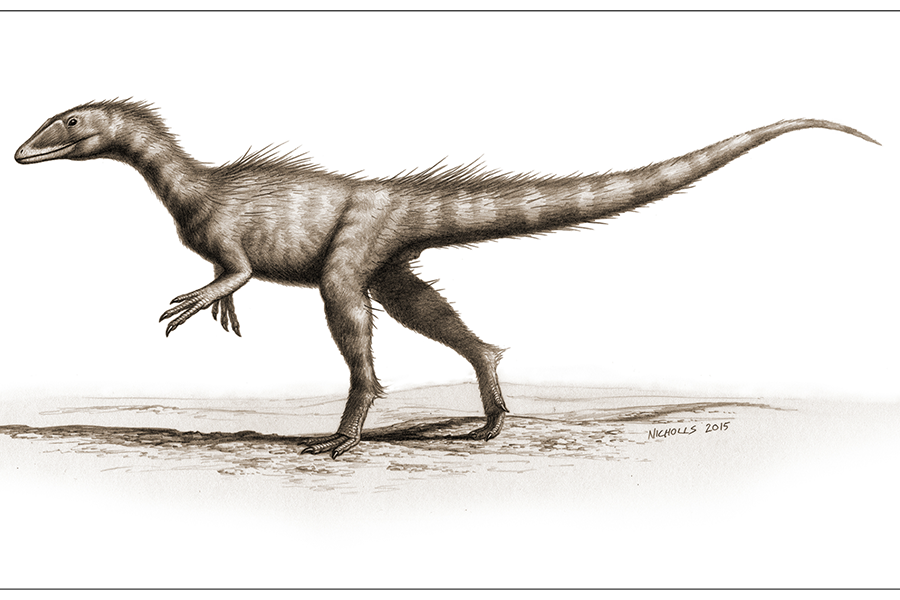Behold the 'dragon thief,' the oldest known Jurassic dinosaur
Loading...
A new species of dinosaur, whose fossilized bones were discovered by amateur fossil hunters at a beach in Wales in spring 2014, has been named Dracoraptor hanigani, or "dragon thief."
Paleontologists who have been studying this very distant cousin of Tyrannosaurus rex say that it lived some 200 million years ago, at the beginning of the Jurassic period. It is the oldest known dinosaur from this period.
They named it after the Welsh national symbol – the dragon, or "draco" – and "raptor," meaning thief or plunderer, reflecting the meat-eating dinosaur's small, needle-sharp teeth with steak-knife-like serrations. The “hanigani” is a nod to the brothers who found the fossils, Nick and Rob Hanigan.
The two were on the south coast of Wales looking for remnants of ancient marine reptiles, called ichthyosaurs, when they noticed that boulders had crumbled off a cliff on a beach near Penarth in the Vale of Glamorgan, exposing bones, which they correctly identified as dinosaur bones. The Hanigans notified the National Museum Wales in Cardiff and other experts who visited the site and recovered more bones.
All together, the fossils recovered include the Dracoraptor’s skull, claws, teeth and foot bones, which have since been donated to the National Museum Wales where they are now displayed.
“It’s the best dinosaur fossil Wales has ever had,” Steven Vidovic, a paleontologist from the University of Portsmouth, who studied the fossils, told The Guardian.
The team of researchers from the museum, from the Portsmouth university and from the University of Manchester, who described the fossil remains in a paper in the journal PLOS One, believe the dinosaur was a juvenile, with some bones that were not yet fully formed.
“This animal was small, slim and agile – probably only around 70 cm tall and 200 cm long – the size of a leopard or a cheetah maybe. It also had a long tail to help it balance,” David Martill, a paleobiologist from the University of Portsmouth, said in an announcement.
The animal likely died on a nearby island and washed into the sea where it sank to the bottom. There, reports the Guardian, prehistoric sea urchins nibbled on its skin and sinews. The leftover bones were buried over tens of millions of years in sediments that now form the cliff face at the beach.
Researchers in Wales had previously found only pieces of Jurassic dinosaurs, such as their their teeth and bones. With the discovery of the Dracoraptor, scientists now have about 40 percent of a Jurassic dinosaur skeleton, making it one of the most complete specimen in the world.






